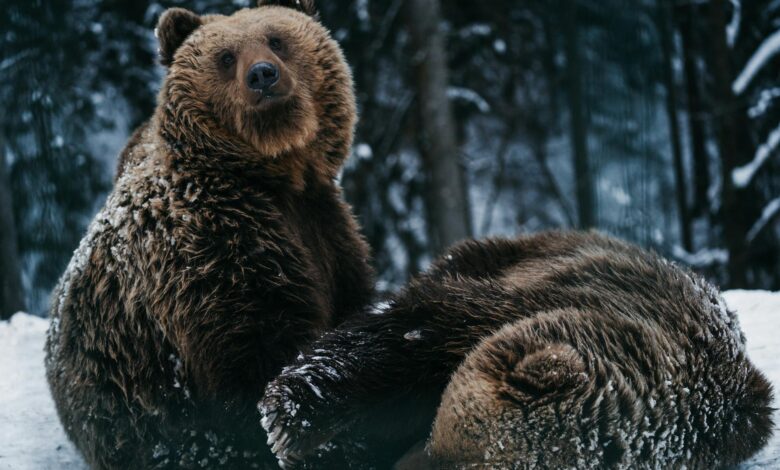Outrage Among Ecologists as Slovakian Authorities Eliminate Numerous ‘Troublesome’ Bears

A group of young bears can be seen strolling around the forest enclosure at the Bear Rescue Centre, managed by the International Fund for Animal Welfare, situated near Bubonitsy village in Russia.
Hunters can now legally hunt and kill a larger number of bears that are labeled as “threatening” to nearby inhabitants, but skeptics argue that this change is primarily motivated by the desire for hunters to pursue them as prizes instead.
Between January and mid-July, over 30 bears were killed by both Slovakian officials and hunters, causing outrage among environmentalists and advocates.
According to Milan Boroš, the general director of Slovakia’s State Nature Conservancy office, 30 “problematic” bears were killed by the authorities while hunters were given permission to hunt down an additional 11 bears.
Calls to reevaluate the protected status of bears in Slovakia and other parts of Central and Eastern Europe have been made following a string of attacks, including some that resulted in fatalities, that occurred last year.
Slovakia’s environment minister, Tomaš Taraba, who belongs to the far-right, is pushing for stricter measures to protect people by granting hunters additional opportunities to eliminate potentially dangerous bears.
However, ecologists and the opposition Progressive Slovakia party strongly oppose this viewpoint. According to MEP Michal Wiezik, who has consistently advocated for the protection of bear populations, the Ministry of Environment has simply found a means to permit trophy hunting for hunters.
According to Wiezik, there has been no evidence of new skills or improvements in preventative measures.
The real question is whether the main goal was to safeguard the peace and tranquility of the locals, or if it was actually driven by the desire to cater to the hunters.
The EU Habitats Directive and the Bern Convention currently offer protection to the European brown bear.
In June, Brussels granted Slovakia provisional approval to modify its laws, as stated in a note obtained by Euronews. This would enable them to take action against bears when they are seen near populated areas.
What is the level of danger posed by bears in Slovakia?
According to various videos on X, there have been instances where bears and humans have come into contact, potentially endangering lives.
A video uploaded by Maciej Perzyna, a user on X platform, depicts the town of Liptovský Mikulaš situated near the Tatra mountains. The video shows that earlier this year, five individuals, ranging from the age of 10 to 72, sustained injuries in the town.
Not all encounters lead to attacks. According to the Slovak Nature Conservancy, there has been an increase in bear attacks since 2000, but only by a small number. The number of attacks went from one in 2001 to a total of 12 in 2023.
Ecologist Erik Balaž, known for his expertise, suggests that preventive measures should be prioritized over culling bears. He holds the ministry responsible for not taking sufficient action to protect people from hungry bears, such as implementing bear-proof trash bins.
According to the recommendations from the World Wildlife Fund, the most effective solution to prevent bear-related issues is to implement preventative measures. These measures may include deterring bears from human settlements and safeguarding sheep with highly trained dogs, as previously practiced.
In Slovakia, the population of European brown bears was dangerously low in the 1930s with a mere 20-60 individuals left due to excessive hunting.
Also read: Megafauna: The Giants of the Past and Present




